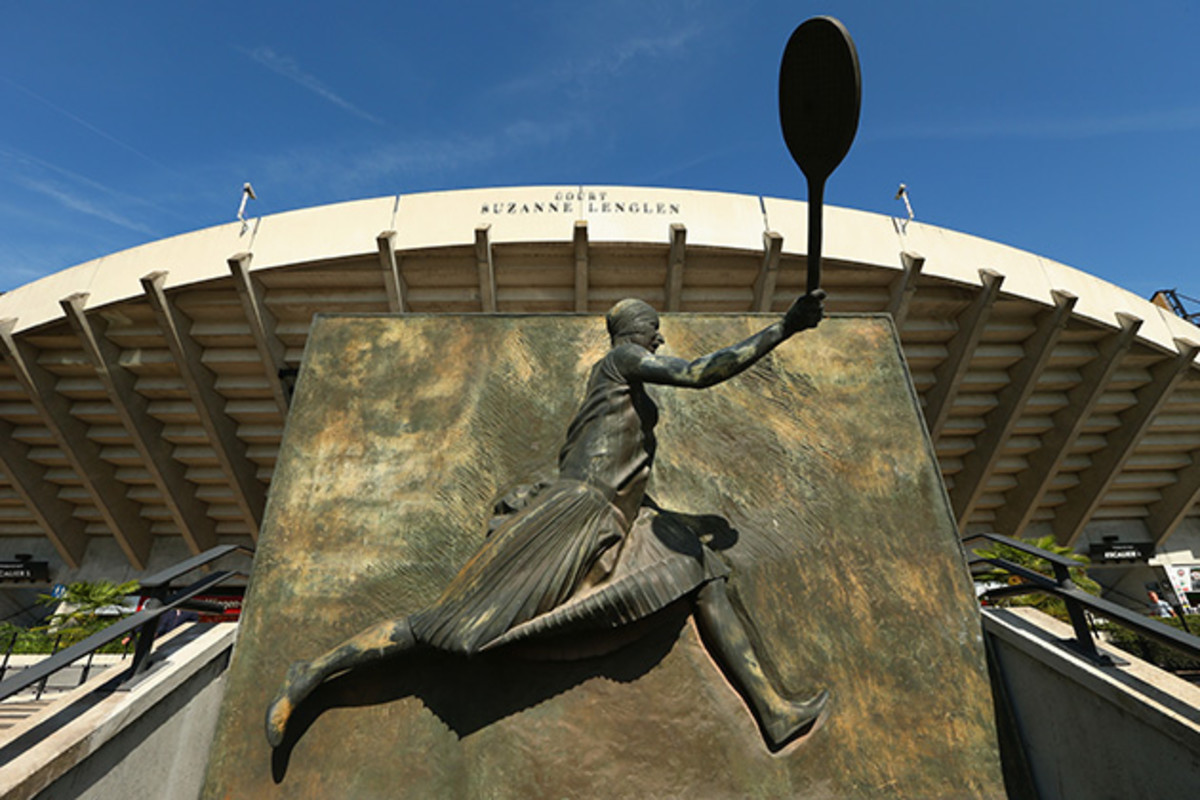Where does Roland Garros get its name? Inside the stadium’s history

Get all of Tim Newcomb’s columns as soon as they’re published. Download the new Sports Illustrated app (iOS or Android) and personalize your experience by following your favorite teams and SI writers.
The Four Musketeers—Les Quatre Mousquetaires—have left their legend all over the French Open, whether it be the name of the tournament’s trophy, a popular locale on the Roland Garros grounds or even the very fact we have Roland Garros at all.
French tennis was a thing before the Four Musketeers of Jean Borotra, Jacques Brugnon, Henri Cochet and RenéLacoste popularized the game with a 1927 Davis Cup victory over the U.S. In 1891 a one-day men’s singles championship for members of French clubs started in the StadeFrancais club in Paris. Six years later women joined in, and in 1925 international competitors were allowed to participate in an event that alternated between StadeFrancais and Racing Club de France.

But the Four Musketeers gave French tennis urgency. Defending the Davis Cup in 1928, they called for a stadium worthy of the competition. And Stade Francais had just the spot, giving up over seven acres of land near Porte d’Auteuil to the French Tennis Federation on one condition: the new stadium be named Roland Garros after a club member and World War I aviation hero who had died 10 years prior.
Built in eight months and with an initial seating capacity of 10,000 that included cement loge boxes and temporarily constructed wood stands—architect Louis Faure-Dujarric used the Saint Andrew’s cross design to keep financial costs down while still giving the site a bit of aesthetic flair—the original Centre Court opened in 1928 and has served as the home of the French Open ever since. (The tournament will be held this year from May 22 to June 5.) Along with Centre Court, 1928 also saw the opening of Courts 2 and 3.
Just one year later the wooden stands were replaced by concrete and a gradual expansion of the grounds was underway, even if World War II reportedly included a dark spot on the history of Roland Garros, as the stadium allegedly served as a temporary 10-month prison camp for political dissidents.
Amelie Mauresmo left lasting impression on Andy Murray
A major stadium expansion took place in 1979 with the extension of seating on the main court, the addition of another stadium court and three partially sunken courts added to the mix on land new to Roland Garros. By 1980, Roland Garros was up to 10 courts.
Over the next two decades, what started as a site encompassing just over seven acres in 1928 was eventually built to the more than 21 acres Roland Garros covers today, complete with the main stand—named Court Philippe Chatrier in 2001—seating 14,840 and Court Suzanne Lenglen, which was built in 1994, seating 10,068. The site and its 20 courts grew from its 1928 beginnings, but today represents the smallest grounds of the four majors.

Expansion efforts have bounced around Roland Garros since 2004. Now officials want to expand the site to over 27 acres, placing a retractable roof on Court Philippe Chatrier and a new sunken court in the expansion area. With a political start-and-stop process due to Roland Garros desiring to move into land currently occupied by historic greenhouses and gardens, the latest schedule for the expansion has the project wrapping up in 2019, but no construction has started.
Maybe a remembrance of the Davis Cup lore of Les Quatre Mousquetaires can once again change the future of Roland Garros.
Tim Newcomb covers sports aesthetics—stadiums to sneakers—and training for Sports Illustrated. Follow him on Twitter at @tdnewcomb.
